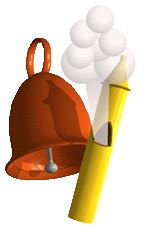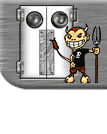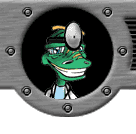|
 Caution: There are important things to remember when observing youngsters.
Caution: There are important things to remember when observing youngsters.
 You want an opportunity
to learn, but you do not want to interfere with the flow of the classroom. You want an opportunity
to learn, but you do not want to interfere with the flow of the classroom.
 You want to gain experience
but you do no harm. You want to gain experience
but you do no harm.
 It is a good idea to
be clear with the teacher about what you will be doing. It is a good idea to
be clear with the teacher about what you will be doing.
 Provide a copy of the
assignment, if you wish, and find a time that will be the least disruptive
for the students. Provide a copy of the
assignment, if you wish, and find a time that will be the least disruptive
for the students.
 If the teacher wants
to chat with you while students are working, that is his or her option,
but do not go in expecting to monopolize the teacher's time. If the teacher wants
to chat with you while students are working, that is his or her option,
but do not go in expecting to monopolize the teacher's time.
PEPSI Observations
You will probably want to print these out. For each observation, there
is a matching reflection page. You can give yourself an emerald for each
observation and reflection you complete.

- PEPSI Observation: Physical
- PEPSI Reflections: Physical
- PEPSI Observation: Emotional
- PEPSI Reflections: Emotional
- PEPSI Observation: Philosophical
- PEPSI Reflections: Philosophical
- PEPSI Observation: Social
- PEPSI Reflections: Social
- PEPSI Observation: Intellectual
- PEPSI Reflections: Intellectual

PEPSI Charts:
- Year 1
- Year 2
- Year 3
- Year 4
- Year 5
- Year 6
- Year 7
- Year 8
- Year 9
- Year 10
- Year 11
- Early Adolescence
- Late Adolescence
Remember
- children grow and develop in a step-wise manner. They do not always
grow up at the same rate as their chronological ages. When looking at
these charts, remember that the list of characteristics are compiled by
looking at thousands of children. A child may be ten and doing some things
that are ninish or early adolescent. It varies and it is normal for a
child to grow at a personalized pace. The idea is to locate strengths
and growth areas and appreciate the child, not to label, cheer or be disappointed
by the findings.
Once you have
completed this topic you should:
Go on to
Assignment 1
or
Go back to Online Reading
|
















